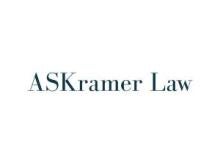Are there differences in the way in which derivatives and insurance contracts are regulated?
Yes. Weather derivatives and insurance contracts are subject to totally different regulatory regimes. Derivatives are subject to the Commodity Exchange Act (CEA) and are regulated by the Commodity Futures Trading Commission (CFTC)[1]. Insurance products, on the other hand, are regulated by the various State insurance commissioners, each of which has specific jurisdiction over insurance companies that are domiciled in or doing business in that particular State. For example, weather derivatives are frequently structured as products included in the definition of swaps, and the 2010 Dodd-Frank Wall Street Reform and Consumer Protection Act (Dodd-Frank Act)[2] provides that (1) swaps cannot be considered to be insurance; (2) products traditionally regulated as insurance cannot be regulated as swaps; and (3) a swap “shall not be considered to be insurance” and “may not be regulated as an insurance contract under the law of any State.”[3]
What differentiates weather derivatives from weather insurance?
It seems obvious to say that derivatives are not insurance and insurance contracts are not derivatives. But the lines between these two risk management products blur and can be difficult to distinguish. In fact, there have been regulatory attempts over the years to characterize certain types of insurance contracts as derivatives, and certain derivatives as insurance products.
Insurance contracts are excluded from the CEA and from CFTC jurisdiction if—but only if—certain conditions are met. Either the contract qualifies for the “Insurance Safe Harbor” set out in CFTC Rule 1.3(xxx)(4)(c),[4] or the contract is treated as an insurance contract based on all of its relevant facts and circumstances. This means that it is possible for regulation to be unclear for a contract that does not meet the Insurance Safe Harbor. For example, if a parametric insurance policy is structured so the policyholder can collect a payout if the weather trigger event occurs without the policyholder needing to demonstrate an insurable risk and without providing proof of loss, that parametric “insurance product” may actually be regarded as a derivative contract subject to the CEA and CFTC jurisdiction. This might be the result even if the contract was issued as an insurance policy and it is treated as insurance by the relevant state insurance commissioner. Such a contract can be subject to both derivatives’ regulation and State insurance regulation. In addition, the tax rules are different depending on whether a contract is classified as a derivative. As a result, a business seeking to manage its weather-related risks must carefully consider the structure of the risk transfer products it uses to determine their regulatory (and tax) treatments.
How is a “swap” defined in Dodd-Frank?
The CFTC and the SEC[5] in a Joint Final Rule addressing key Dodd-Frank definitions noted that the statutory definition of the term ‘swap’ includes, in part, “any agreement, contract, or transaction […] that provides for the purchase, sale, payment, or delivery (other than a dividend on an equity security) that is dependent on the occurrence, non-occurrence, or the extent of the occurrence of an event or contingency associated with a potential financial, economic, or commercial consequence.”[6] The CFTC and the SEC went on to say that there is “nothing in [Dodd Frank] Title VII to suggest that Congress intended for traditional insurance products to be regulated as swaps or security-based swaps.”[7] When the CFTC and the SEC issued the Joint Final Rule, they provided a non-exclusive Insurance Safe Harbor so that “traditional insurance products” would not be regulated as swaps. The key phrase here is that “traditional insurance products” are not to be regulated as swaps. But what are “traditional insurance products”?
Is parametric insurance a “traditional insurance product”?
Maybe. The answer to that question turns on how the contract is structured and drafted, including whether the policyholder must prove loss to collect under the policy. If the policyholder collects after a triggering event occurs and it need not demonstrate an insurable risk or a proof of loss, the contract is likely to be characterized as a derivative.
What are the components of the Insurance Safe Harbor?
The Insurance Safe Harbor is a multi-part test for distinguishing swaps (regulated by the CFTC) from traditional insurance products (regulated by State insurance commissioners). To qualify for the Insurance Safe Harbor, the contract needs to require that a loss be proved and the value of the payment must be limited to the amount of the policyholder’s loss from an insurable interest. The Insurance Safe Harbor consists of four components: (1) the Product Test, (2) the Provider Test, (3) Enumerated Products, and (4) the Grandfather Clause.
Must all four of these components be met for the Insurance Safe Harbor to apply?
No. To qualify for the Insurance Safe Harbor, both the Product Test and the Provider Test must be met. If the contract is an Enumerated Product or meets the Grandfather Clause, however, it must only meet the Provider Test.
What is the Product Test?
The Product Test sets out four requirements for a contract to be treated as insurance:
-
the beneficiary must have an insurable interest that is covered by the contract;
-
the beneficiary must bear the risk of loss with respect to the insurable interest throughout the life of the contract;
-
the loss must actually occur, be proven, and require a payment that is not in excess of the value of the insurable interest; and
-
the contract must not trade or be traded separately from the insured interest.
What does the Provider Test require?
The Provider Test requires that the person selling the contract must be subject to supervision by an insurance commissioner (or similar regulator) of any State or the federal government, and (subject to some special rules) the contract must be regulated as insurance under applicable laws.
In the case of reinsurance, the contract must be issued by a person to another person that satisfies the Provider Test, provided that (1) such person is not prohibited by applicable State or federal laws from offering such agreement to such person that meets the Provider Test; (2) the agreement to be reinsured meets the Product Test, or one of the Enumerated Products (defined below); and (3) except as otherwise permitted under applicable State law, the total amount reimbursable by all reinsurers for the agreement cannot exceed the claims or losses paid by the company that cedes its business to the reinsurer.
In the case of non-admitted insurance, the contract must be issued by a person located outside of the United States and listed on the Quarterly Listing of Alien Insurers as maintained by the International Insurers Department of the National Association of Insurance Commissioners, or it meets the eligibility criteria for non-admitted insurers under applicable State law.
What insurance products are included in the definition of Enumerated Products?
Enumerated Products do not need to meet the Product Test. They are excluded from the swap definition if they are offered by a provider that meets the Provider Test. Enumerated Products include life insurance, health insurance, long-term care insurance, title insurance, property and casualty insurance, annuities, disability insurance, insurance against residential mortgage defaults, surety bonds, fidelity bonds, and reinsurance (including retrocession) of any of these Enumerated Products.[8]
Is weather risk parametric insurance treated as property and casualty insurance?
Maybe. Parametric insurance will generally qualify as property and casualty insurance if the policyholder must prove it has a loss on a physical asset and the parametric payment is limited to the amount of the policyholder’s loss. Issuers of parametric insurance take the position that parametric insurance, as property and casualty insurance, is an Enumerated Product if the policy meets the requirements of proof of loss and payments are limited to the policyholder’s loss. Some parametric insurance might take the form of business interruption insurance that is often added onto property and casualty policies. Businesses must proceed with caution and carefully evaluate the terms of the parametric insurance policy to determine its regulatory status.
What is the relevance of the Grandfather Clause?
The Grandfather Clause provides that any contract that was entered into before October 12, 2012 is excluded from the Product Test if the contract met the Provider Test at the time it was entered into.
Is the Insurance Safe Harbor the only way for a contract to treated as insurance?
No. The Insurance Safe Harbor is not the exclusive way in which contracts can be treated as insurance. If a contract does not meet all of the safe harbor requirements, it is not automatically deemed to be a swap for regulatory purposes. Rather, the facts and circumstances surrounding the contract must be analyzed to determine whether the contract is regulated as insurance or as a swap.
Conclusion
Enterprise-wide climate risk managers have a range of weather-risk transfer products that they can use to manage against their ERM frameworks. In Part I of this Q&A series, we looked at climate and weather risk management; in Part II, we looked at these risk transfer products in more detail; and in Part III, we reviewed their regulation. Coming up in Part IV we’ll look at one of my favorite subjects. We’ll take a deep dive into the U.S. taxation of weather risk transfer products.
In the preparation of Weather & Climate Risk Management, an occasional series from ASKramer Law,
I want to extend my gratitude to Brian O’Hearne, CEO of Hailios, for his comments.
[1] The Commodity Exchange Act, https://www.govinfo.gov/content/pkg/COMPS-10309/pdf/COMPS-10309.pdf
[2] The Dodd-Frank Act, https://www.congress.gov/111/plaws/publ203/PLAW-111publ203.pdf
[3] Dodd-Frank § 722(b), amendment to CEA by adding CEA §12(h).
[4] CFTC and SEC, Further Definition of “Swap,” “Security-Based Swap,” and “Security-Based Swap Agreement”; Mixed Swaps; Security-Based Swap Agreement Recordkeeping, A Rule by the Commodity Futures Trading Commission and the Securities and Exchange Commission, 77 Fed. Reg. 48208, August 13, 2012. https://www.federalregister.gov/documents/2012/08/13/2012-18003/further-definition-of-swap-security-based-swap-and-security-based-swap-agreement-mixed-swaps
[5] CFTC and SEC, Further Definition of “Swap,” supra note 4.
[6] CEA §1a(47)(A)(ii). https://www.govinfo.gov/content/pkg/COMPS-10309/pdf/COMPS-10309.pdf
[7] CFTC and SEC, Further Definition of “Swap,” supra note 4.
[8] The reinsurance or retrocession cannot be accomplished by entering into swaps or security-based swap.




 i
i


